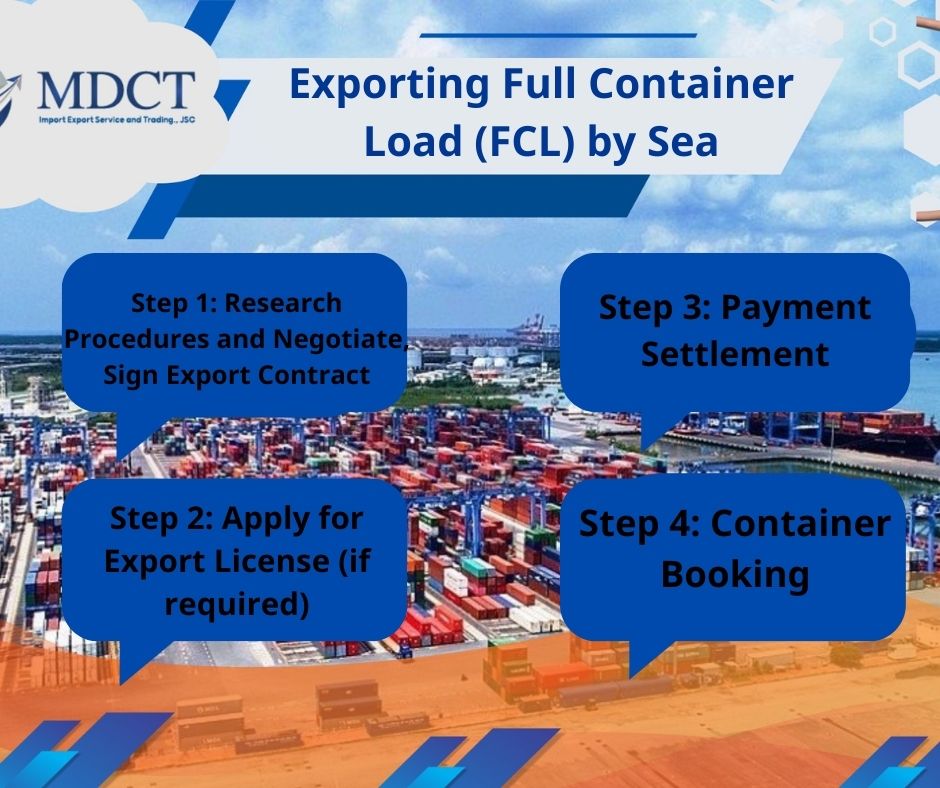
Step 1: Research Procedures and Negotiate, Sign Export Contract
In this phase, it is crucial to verify whether the intended export items are on the list of prohibited or conditionally exported goods. If not, the process proceeds normally. However, for restricted items, obtaining the necessary export license is essential. Negotiations and signing of the export contract with the importing partner also take place in this step. This contract outlines the responsibilities and obligations of each party.
Step 2: Apply for Export License (if required)
This step is relevant when the items fall under the category requiring an export license. For instance, exporting rice may necessitate obtaining a business license from the Ministry of Industry and Trade. Therefore, researching product information thoroughly or seeking assistance from professional logistics companies specializing in that specific export can be beneficial.
Step 3: Payment Settlement
Common payment methods include Telegraphic Transfer (TT) and Letter of Credit (LC). The choice depends on the agreement between you and the importing partner. Seeking advice from logistics experts or consulting directly with your company's bank can optimize the payment process.
Step 4: Container Booking
Once the export contract is in place and the export license, if needed, is secured, the next step is to book the container. Depending on the trade terms specified in the contract, you'll determine who is responsible for booking – either the buyer or the seller. This involves liaising directly with the shipping company or a logistics firm like MDCT Logistics to secure the container.

Step 5: Packing and Transport to Port
Utilizing the booking note, obtain an empty container from the yard. After packing, seal the container. If specialized procedures like fumigation or plant inspection are required, a temporary seal suffices. Transport the container to the port within the designated time frame, adhering to DEM/DET times.
Step 6: Customs Clearance at the Port
Prepare customs declaration along with essential documents such as the sales contract, commercial invoice, and packing list. Submit these documents to customs for inspection and clearance. Depending on the trade terms (e.g., FOB), the responsibilities may differ post-customs clearance.
Step 7: Complete Necessary Documents
Fulfill any outstanding documentation requirements specified in the contract. This may include certificates of origin, phytosanitary certificates, or fumigation certificates. Collaborate with the importer to ensure accuracy and avoid delays.
Step 8: Send Documents for Importer Confirmation and Finalize Procedures
Send the original documents to the importer as agreed upon in the contract. Simultaneously, provide scanned copies for preliminary arrangements. At this stage, the export process for FCL by sea is complete, but monitoring the vessel schedule, importation commencement, and payment progress is essential.










